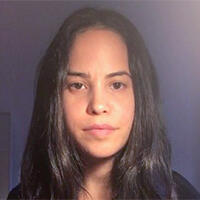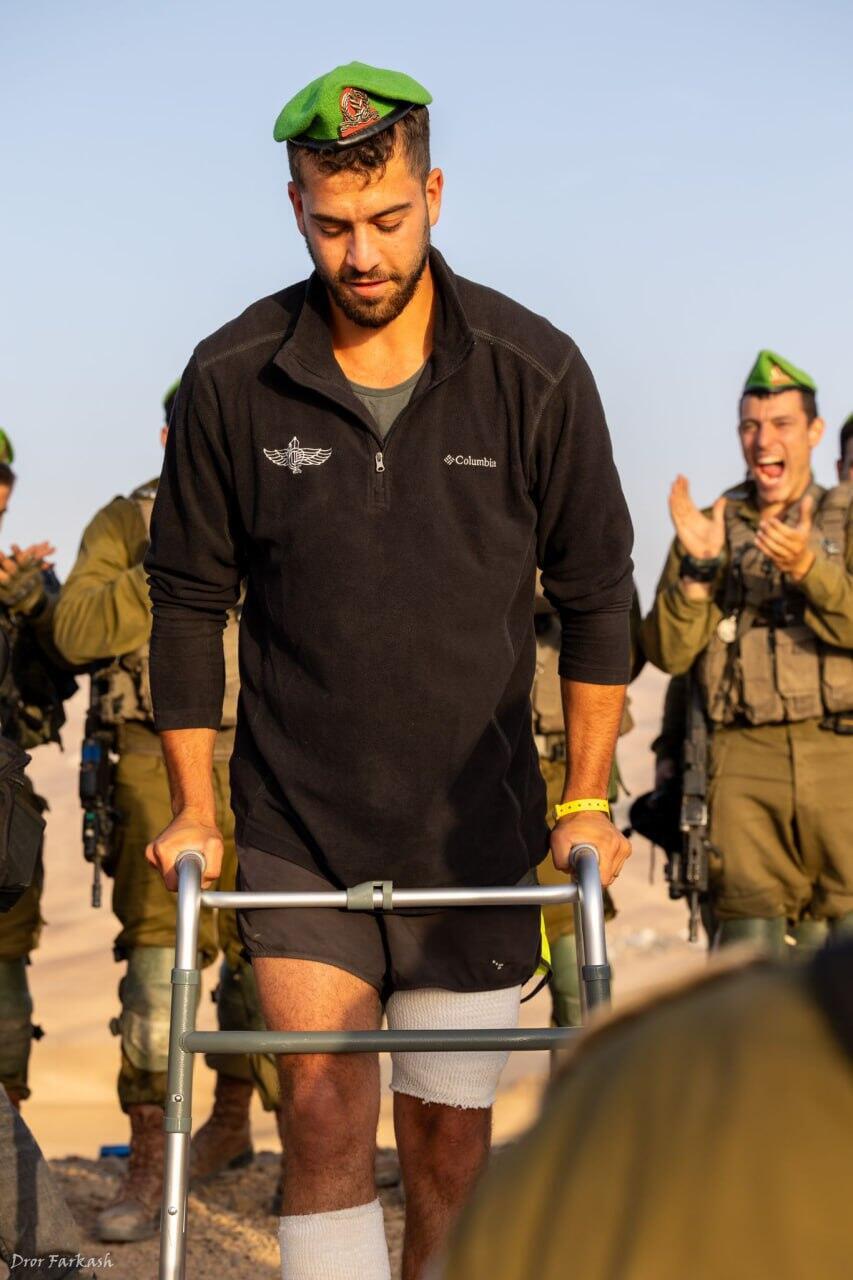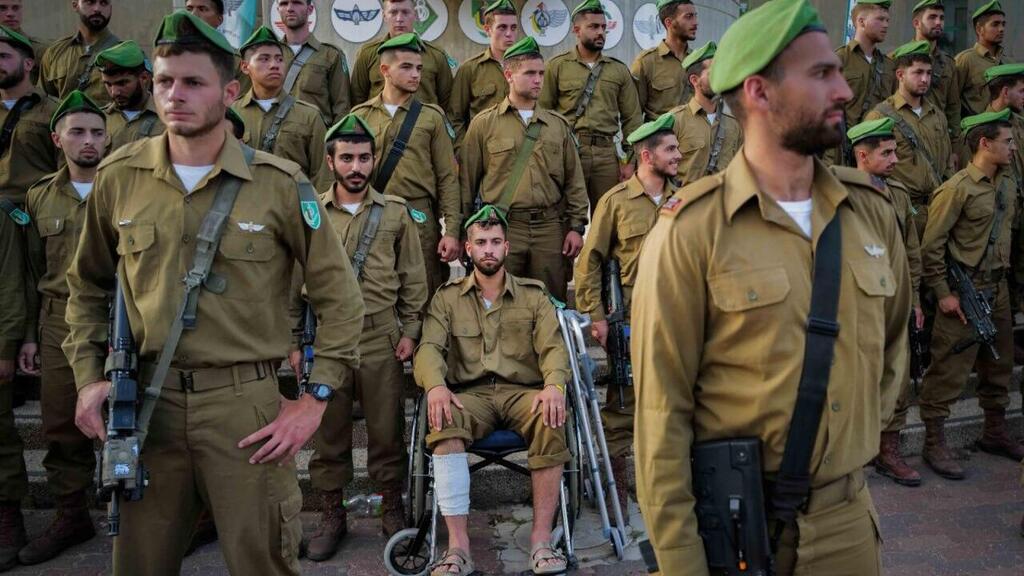Getting your Trinity Audio player ready...
Corporal Noam and his squad mates ascending Masada for training graduation
Corporal Noam, 20, a soldier in the Nahal Brigade who was injured in both legs during clashes in Gaza, attended his training course graduation ceremony in a wheelchair, with his comrades helping him ascend Masada, where the ceremony took place.
Corporal Noam got married at the beginning of the war in Gaza and immediately left for combat in the Hamas-ruled enclave, where he was wounded in combat in Gaza City's Zeitoun district. "It happened on the day five soldiers from the Nahal Brigade’s 931st Battalion were killed," he recalled.
"A few hours later, snipers fired at my unit, and then an anti-tank missile was fired at us. I remember the next moment, trying to dodge and release myself, and at that time, my legs were hurting—but I still didn't think I was injured.”
"After about 20 seconds, I looked down at my legs and saw blood,” he added. “I applied a tourniquet with the help of a friend and was then led to a safer area where a helicopter could land. While being evacuated on a stretcher, I kept thinking, 'I'm on my way to see my wife and feel her big hug.' That's what gave me strength."
"There are ricochets in my left leg, and I can’t feel it; the bullet fragment, miraculously, stopped at the artery. There's a bullet or a fragment of it in my right leg that came about a centimeter from the bone and, miraculously, didn't hit it. The doctors say I'll be able to walk with a lot of work and rehabilitation," he shared about his recovery, saying, "my wife is with me at all times. I hope to recover soon, and I want to walk again and return to fighting. Right now, I'm focused on recovering."
Corporal Noam wished to join his brothers in arms for the traditional IDF training graduation ceremony at Masada, an ancient fortress perched on top of a 1,500-foot-tall rock plateau overlooking the Dead Sea, and receive his unit beret and recite the IDF oath.
Despite having the option to take a cable car to the summit, Noam opted for the traditional 1.6-mile hike up the mountain despite his injuries. His comrades volunteered to carry him in a wheelchair up to the fortress, a symbol of Jewish resistance during the First Jewish–Roman War.
"When we thought how I could get there, all of the officers said there was no way to scale the mountain because it's a steep climb, and tough to make with injured legs,” he said.
“My father, my wife and I decided not to give up; we'd get there and find a solution. Six graduates of the unit held me from all sides, and we climbed slowly. I saw my friends below. It was heart-wrenching, but it was also great to see them climb with such ease.”
"It was powerful,” he concluded. “I didn't think my training course would end this way. You give all you have during it, and I was sure I’d be one of the climbers. Ultimately, I climbed too, in my own way."







